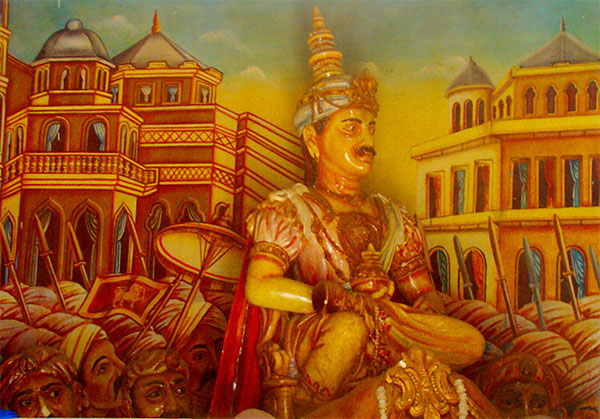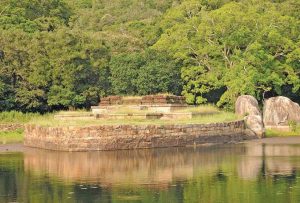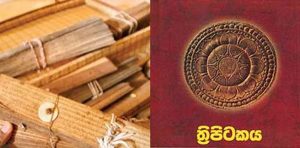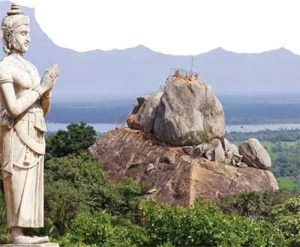
The king dynasty of Sri Vijaya commenced with the dynasty of Sri Wickrama Rajasinghe on March 2, 2019. That was when the Kandyan Sinhala-English agreement was signed on March 2, 1815. In 1505, after the Portuguese occupied the coastal areas of Sri Lanka, the colonial administration in Sri Lanka, followed by the Dutch and the English, was never a slave until the Kandyan Convention was signed.
However, the Sinhalese dynasty that was then concurred with the Kandyan Convention was ruled by Sri Lanka to King George III of Sri Lanka. It is well-known that our king, even the king, even ashamed of the covenant, as the king of the United Kingdom, as the Third Lord of the universe, as our king Sri Wickrama Rajasinha-R-Guru.
The agreement was signed by the Governor Robert Brownnig for the British. Ehelepola, Molligoda (the first Adikaram and the Hatkodara Disawa), Pilimatalawwa (the second Adikaram and the Sabaragamuwa Disawa), Pilimatalawa (Sathara Korale Disawa), Monarila (Uva), Ratwatte (Matale District), Dullewa (Walapane Disawa), Millawa (Wellassa and Bintenne Disawa), Galagama (Thamankaduwa) And Galagoda (Kandy Artists Disawa).
The marking of a significant milestone in ancient history took place at the same chapel located in the kings’ district of Kandy. An important monument in Kandy’s World Heritage City is nowadays legend dating King Rajadhi Rajasinghe in 1783 AD. This is said to have been created by artist Devendra Mulachar. According to legendary information, the king was very much aware of his creativity and this was a nasty man who told the king about him. It is said that the king who was implanted in this manner flogged the finger of the founder’s hand and that he became very angry and jumped into the jungle.
However, there is information that the building had existed before the reign of King Rajadhi Rajasinghe according to historical sources. In particular, the writer of the German Johann Wolfgang Heid of 1736, who wrote in 1736, describes Kandy in the description on the maul saloon and also points out the city plan. Accordingly, Rajadhi Rajasinha had made the construction or upgrading of a building which was in existence at that time.
However, when the English arrived in Kandy in 1796 it was too late. It is also apparent that Lewis’s advice to King Rajadhi Rajasinghe also has not been completed. The building, which was once destroyed by fire, was incomplete when it signed the upcountry census in 1815.
The mausoleum has been completed in 1875 to mark the arrival of Prince William of Wales (later Edward VIII). As a result, some of the walls were broken down and lengthened. In the old records, it is stated that the old Kandyan Museum is used by the Sri Wickrama Rajasinghe temple for the extreme: for the purpose of constructing the newly built section.
In the past, the kings had used the king and the ministers to admit foreign ambassadors who came to Kandy to attend the Magul Maduwa. Subsequently, it was also referred to as the “Great Case” and “Mage slavy”, as used by the Supreme Court.
This is where the appeals were made to the king against the decision given by the Nilames. Those appeals were resolved by a person in the rank of Adikaram, Disawa, Secretary and Muhandiram.
An accountant or a high ranking official took the chair. After the surrender of Sri Lanka to Britain in 1815, after the surrender to the British, many cases against Sri Lankans opposed to British rule were examined. Patriots like Keppetipola and Madugalle, especially those who betrayed the British government, were sentenced to death on a wedding ceremony.
It is noteworthy that the British had been used as a sacred place by the British until the construction of the St. Paul’s Church adjacent to the Nawatte Church in Kandy. According to Prof. Anuradha Seneviratne, the brutality of the British is a well-maintained monastery near the Temple of the Tooth.
In 1875, when Prince Wales came to Kandy to inquire into the historicity of the sacred place, it is unlikely that the event can be overlooked. As noted above, another development was the development of the Knights by Prince of Wales Prince William Prince Gregory in Sri Lanka as the then British representative. It is also published in newspapers on January 15, 1876, for details on woodcarving images.
The original wedding plan is still 19.75 meters long and has a width of 11.65 meters. In 1875 it extended another 10.33 meters. Accordingly, the present building is 30 meters long. The pillars consist of 24 pillars with 24 pillars each side of one piece of wood. The later section is made up of 1 other wooden pole. Accordingly, there are 64 wooden poles in the building.
It is said that these pillars are made of wood and that it has been brought from Matale Nalanda. Each wooden pole embracing the temple’s emblems at Embecke Temple is the second most beautiful flower letter pattern.
Each pillar is decorated with ornaments of four ornaments. Not only its pillars, but also on the roofs of the roofs and scallops, have been decorated with delicate sculptures. The roof according to the Up-Country Architecture consists of the one-way system and the tiled pavement.
The legendary legend of Sri Lanka’s history is the wedding of the historic city of Kandy. It is also a symbol of our past architectural and craftsmanship.
geetha perera






